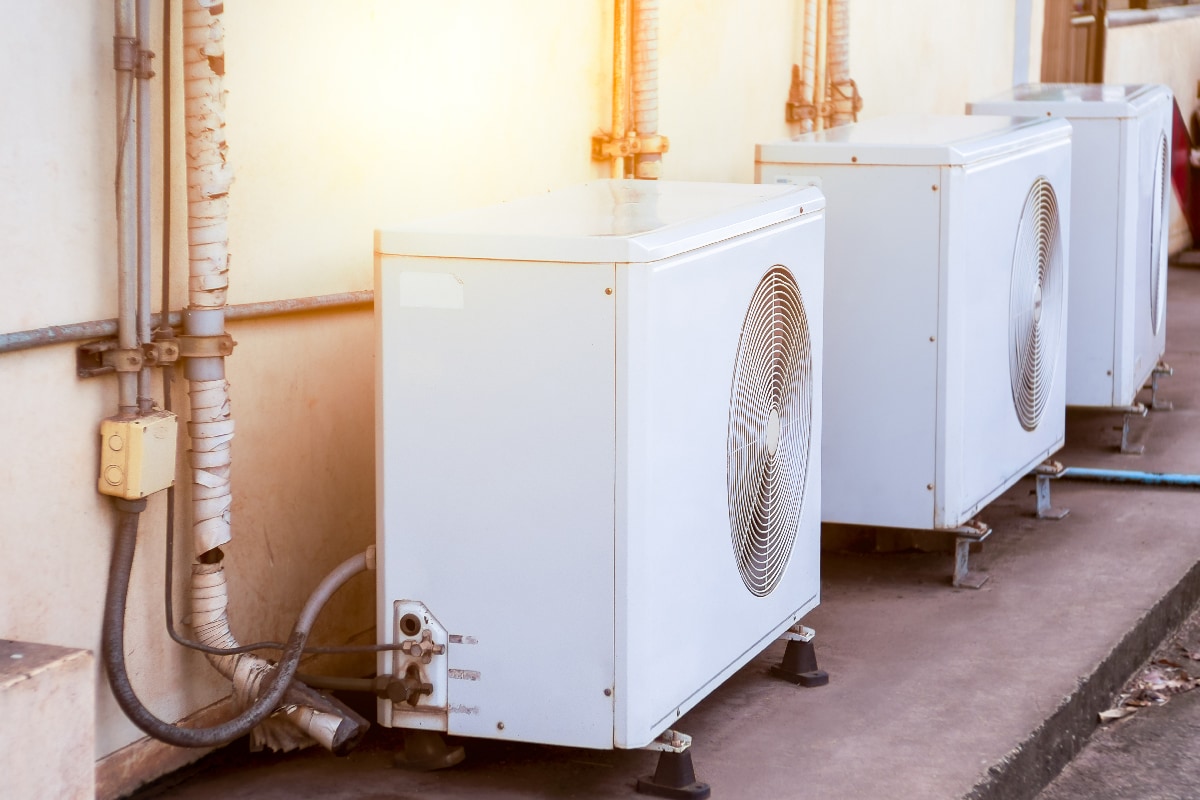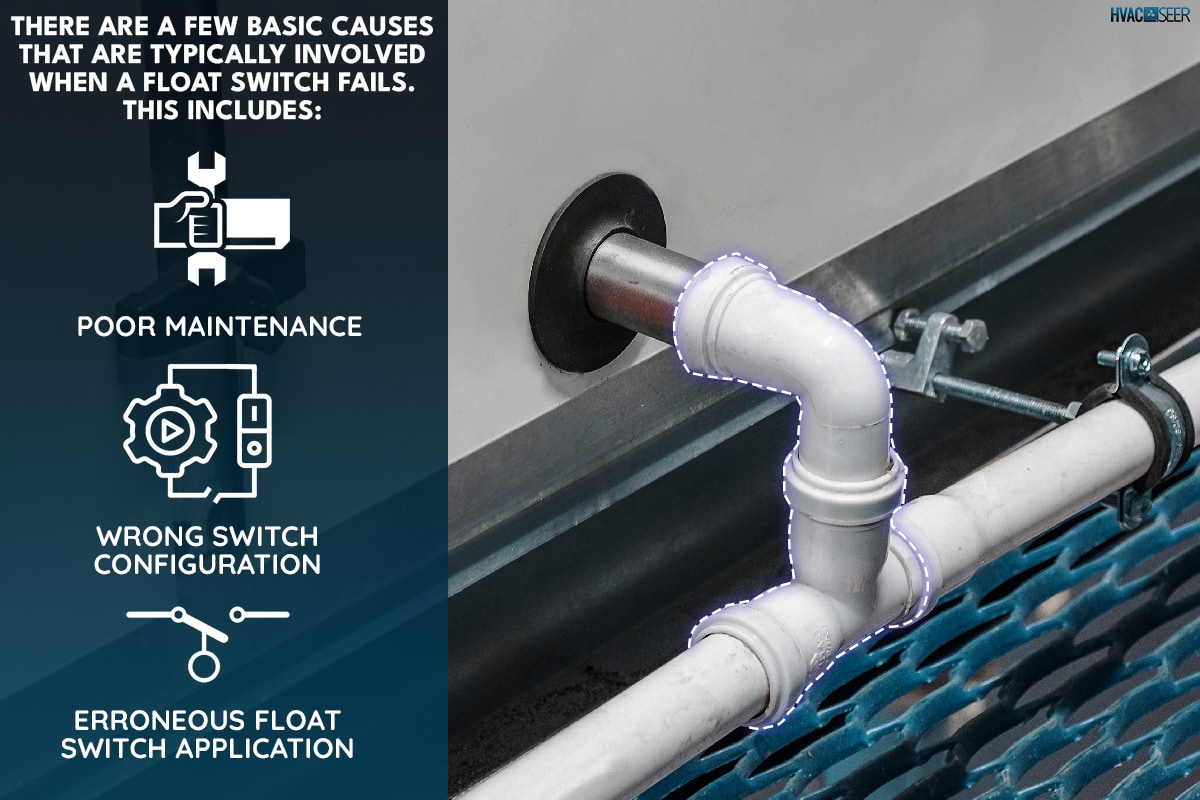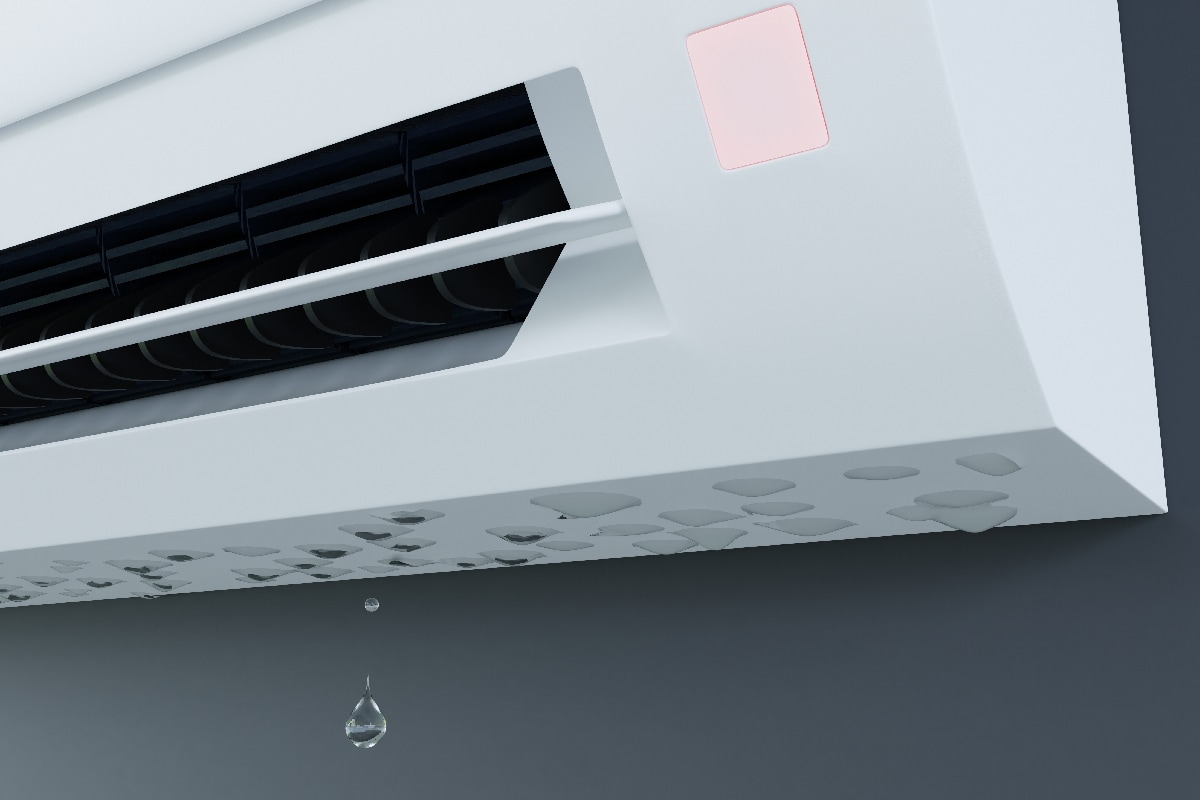It is usual for your air conditioner to condensate as it cools the air. But, too much condensation build-up in your drain pan can cause water to overflow and damage your unit. That's why, to prevent it, a condensate overflow switch is needed. So, if you're wondering how to install one, we researched how to do it, and here is what we found.
To install a condensate overflow switch, you need to:
- Switch the circuit breaker off to turn off the power to the air conditioner.
- Widen the mounting slot gap by turning the two thumb screws on the condensate float switch's back counterclockwise.
- Position the switch's body inside the condensate pan and slide it over the opening slot of one of the flanges of the condensate pan resting below the air conditioner.
- Push the switch downward Until the switch's bottom is firmly resting on the condensate pan's bottom.
- To lock the switch in place, turn the two thumb screws clockwise.
- Use a pair of wire cutters to cut the red "R" termination wire that powers the thermostat.
- Using a pair of wire strippers, remove 1/2 inch of insulation from each float switch wire's ends and the ends of the cut termination wires.
- Twist one end of every float switch wire to an exposed piece of the cut "R" terminal wire. Twist a wire nut onto each pair of wires to secure them.
- Switch the breaker on to return the power to your air conditioner.
Keep reading as we discuss how a condensate overflow switch works and the benefits of using one. We'll also discuss why having one is essential, where it is located, and how much it costs to install one.
How Does A Condensate Overflow Switch Work?
If the AC drain malfunctions, the condensate overflow switch prevents the pan from overflowing. When the water level in the pan rises above a specific level, the switch is turned on, causing the switch mechanism to trip and the float to rise.
Additionally, the device activates when it detects that the water level in the pan is too high, which causes the float to rise and shuts off the compressor. This happens when there is a blockage in the drain or pipe. This stops the system and your house from suffering additional harm.
You can watch a detailed explanation in this video:
Why Is Using A Condensate Overflow Switch Necessary?
If you've ever observed your air conditioner in action during the heat, you know how much water it produces.
Condensation, which is a byproduct of the process of removing humidity from the air, is where the water is produced. A primary drain pan holds the water. Just in case, there is also a backup or emergency drip pan.
The water is then directed away from the drain pan and outside the house to an appropriate area by a drain pipe or condensate pump, depending on your unit type.
Condensation by itself isn't inherently wrong. But think about what would happen if your drain ever blocked and the water had nowhere else to go. That water would eventually overflow, harming your system and, in certain situations, even your house.
Because of this, the condensate overflow switch is a crucial component of every well-maintained air conditioner.
Where Can You Put The Condensate Overflow Switch In Your AC System?

The direction of your HVAC system is the main factor determining where the float switch should be placed.
However, these switches are usually attached to the evaporator coil's secondary drain port or the side of the condensate drain pan. When a specific volume of water is added to the pan's water level, a float inside the switch will rise.
You can also switch on the drain lines of your AC system if you possess a horizontal unit without a secondary drain pan or a vertical unit.
What's more, you should position the switch during installation to achieve the following goals:
- In advance of the pan overflowing, the float trips.
- Have unrestricted access to the filter door and access panels
- If an overflow occurs, water should freely flow to the float.
- Level the installation so the float can rise and fall.
- The switch is set up so it can't be pushed easily into the wrong position.
What Are The Types Of Condensate Overflow Switches?
Switches come in a wide variety, but they can all generally be divided into two categories, namely:
- Float Switch
Click here for this product on Amazon.
- Sensor Switch
Click here for this product on Amazon!
To further explain how each type works, you can refer to the table below:
| Float Switch | Sensor Switch |
|
|
Should You Install Condensate Overflow Switches To Primary And Secondary Drain Pan?
Yes, you should! There are many scenarios where installing a condensate overflow switch for your secondary drain pan may be necessary, even though installing one on the primary drain pan may be sufficient in some cases.
Suppose the primary drain pan within the AC overflows with condensation. In that case, you might have a backup drain pan underneath the unit to catch it- usually when you have an AC system in your garage, basement, or attic.
The extra switch adds another level of defense against condensate accumulation.
What Are The Benefits Of Having A Condensate Overflow Switch?

Here are some of the scenarios where you can see significant advantages of having this device:
- You'll know there's an issue if the AC condensate switch causes your air conditioner to turn off. This implies that you will probably contact the expert when addressing any issues causing the AC to drain slowly. Once the issue is resolved, you can resume enjoying your air conditioning.
- The likelihood of water damage in your home is rather significant if your AC unit lacks a condensate switch. Severe water damage can destroy your home and furniture. Even when you are not home, the safety switch will shut off your air conditioner in time to stop an overflow and leak.
- Additionally, your AC float switch can spare you from having to make costly repairs to your home's furnishings and your AC unit by preventing water damage.
- The water that pours inside the AC unit when there is an overflow in the drainpipe typically promotes mold formation. These microbes will flourish in the air conditioner and may disperse to other parts of your house, harming your health in several ways. The safety switch will reduce their chances of expanding.
- The cost of AC float switches is cheap. They don't cost much to install in your AC units either. As a result, it is clear that the installation cost considerably outweighs any potential problems' expense.
- Lastly, using AC float switches will reduce the likelihood of your AC units' components failing. The lifespan of your HVAC system will benefit from this.
How Much Does It Cost To Install A Condensate Overflow Switch?

If you want something other than a DIY installation, a condensate overflow switch installation costs between $120 and $180, with labor rates ranging from $70 to $130 an hour. The switch itself costs around $50.
Why Does A Condensate Float Switch Fail?

A few basic causes are typically involved when a float switch fails. This includes:
- Poor Maintenance
- Wrong Switch Configuration
- Erroneous Float Switch Application
Poor Maintenance & Wrong Switch Configuration
The solution for issues involving improper configuration and maintenance will depend on the particular float switch and the environment in which it is being utilized.
You'll need to consult the switch's product manual and the manuals for any other equipment it is being used with. Ensure to adhere to the correct installation guidelines and perform any suggested maintenance.
Erroneous Float Switch Application
Depending on the application, you might want a switch made of a different material or one with a specific mechanical configuration. Even while a wrong button might function temporarily, it is considerably more likely to break down or malfunction over time.
In Closing

You need a condensate overflow switch to stop the potential water damage caused by AC use. These devices offer several advantages and are easy to install.
Additionally, it is best to have one installed in your primary and secondary drain pans.
If you enjoyed this post, you can check out other related articles here:


